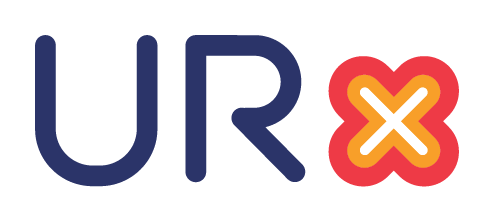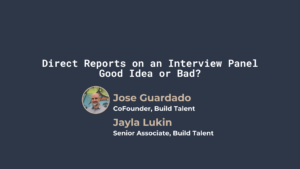BY: Jose Guardado & Jayla Lukin
In a perfect world, everyone knows what to say to make a great first impression. In reality, both sides come to a conversation with knowns and unknowns. We thought it would be helpful to outline how to get the most out of the “get-to-know-you introductory call” and how to manage the conversation itself.
Before interviewing anyone, I recommend Founders calibrate. Tap your network for the Heads of Engineering (or other senior exec) who are established in their career and have seen success. Engage them as an expert as opposed to a candidate. Ask how they think about their responsibilities / their priorities / and their team’s cultures. These conversations can illustrate “what great looks like” and can give you insight into how great leaders think.
Goals Calibration Sessions
1) to validate your role and gauge how it will be received in the market. Do you need this hire? Are you leveling correctly? What type of person does the expert believe you can attract?
2) confirm the qualifications needed for this role. What competencies should they possess? What risks can we take in experience gaps? How are tech skills and leadership skills weighed?
3) how to evaluate executive talent and tell the difference between good versus great. What are the right questions to ask? How do I know if this person is really good? How do you close someone of this caliber?
Spending time on calibration before kicking off a search is invaluable and will save you time and stress.
So now you’re calibrated and ready to go. You’ve signed up a fantastic search firm and you’re ready to start interviewing candidates. In a well-run process, you’re seeing live candidates within the first couple of weeks. Each conversation starts with a first call. We’ll discuss the tone, objectives and format for this meeting and how to get the most out of it.
The First Call
The main objective of the first call is to capture the candidate’s interest and ensure they agree to an interview process. You want to see zero withdrawals at this stage: 100% of candidates should opt to take the next step. Your objective is to sell in process. This does not preclude you from doing your own evaluation. You can get in a few questions (tell me about the culture of your current company? what do you look for when hiring people?) but remember that more substantive assessment can be done later in the process. You’re not looking for a definitive conclusion at this point so much as trying to see if it’s worth both sides investing more time. Sometimes you may get a clear signal or red flag, but often the flags are “orange” or more minor concerns. You can come back to these flags if you decide to keep moving forward.
How do you keep the candidate engaged after the first call?
- Make a good first impression — this is the #1 objective. They want to get a sense of who you are and what it would be like to work with you. They need to like you and believe that you can inspire and recruit other top executives / talent.
- Communicate the vision and mission of the company; why do you exist and where can you go. Earlier stage companies will often rely on your vision whereas later stage companies will have more metrics/data that can help show the growth story.
- Some insight into the values/priorities of your organization. A candidate will be seeking alignment here, and you should be able to give them a sense of what’s important to your company from a values and culture standpoint. What kind of behaviors are appreciated, rewarded, etc.
- Ideally, your questions can show thoughtfulness around how you’re thinking about the role and the hire. (examples: What’s important to you in your next role? How do you think about developing talent you didn’t hire? What’s the right time to bring in CI/CD?)
And what should you avoid sharing?
- Avoid: hardcore evaluation on the first call; this is usually premature and overall not a great look.
- Avoid: showing up late, unprepared or distracted. All of these leave a bad impression.
- Avoid: assuming that candidates come in with a high degree of interest. Some will and others won’t. Some will have to be sold/shown how great your opportunity is. This doesn’t make them a bad candidate.
- Avoid: spending most of the time talking; allow space for questions. It’s more important that the candidate’s questions are answered than yours in this conversation: if the candidate loses interest you won’t have the opportunity to ask further questions.
In our new normal of hybrid/remote setting, it’s important to consider how to conduct this conversation. In the past, it was appropriate and widely accepted to host in-person coffee chats. Pandemic-induced, these meetings are now mostly virtual (or walk and talk if both people are nearby). If an in-person meeting is not an option, our recommendation is that the first touch should always be video. Most communication is nonverbal and you want to allow both sides to get to know each other. Schedule an hour so that you get quality face time with your top prospects. You can wrap up sooner if it’s not going well.
As a founder you’ll have this conversation with executives dozens of times; it’s in your best interest to get good at it. There’s no one way to handle this, but the important thing is to preserve optionality with the candidate. You want them engaged at every point so that if they become your finalist, you have momentum and rapport. If done well, you can preserve your option to reject until it’s the right time to do so, leaving everyone with a positive lasting impression and great candidate experience.
Authors:
Jose Guardado is the CoFounder of Build Talent a company focused on retained search of technology leadership for high growth companies. Previously, he was a Talent Manager at Y Combinator and a Partner at Andreessen-Horowitz focused on executive talent. Prior, he led recruiting for Dropcam (acq. Nest/Google) Edmodo (acq. Netdragon) and Nebula (now part of Oracle).
Jayla Lukin is a Senior Associate at Build Talent






